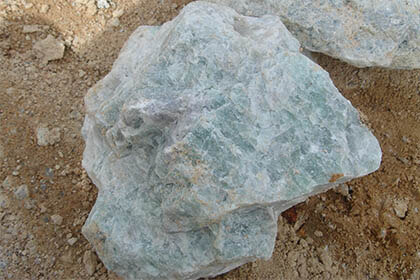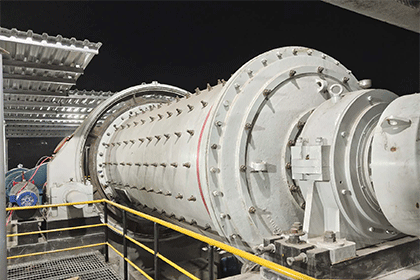Different Types of Fluorite Separation Methods
 Shirley
Shirley
 Nov 18, 2020
Nov 18, 2020
 1716
1716
If you want to know more details about equipment, solutions, etc, please click the button below for free consultation, or leave your requirements!

Fluorite is one of the common non-metallic minerals, also known as fluorspar. Its chemical formula is CaF2. It has rich colors and is widely used in metallurgy, chemical industry, ceramics, glass and foundry industries.
Common fluorite beneficiation methods mainly include manual selection, gravity separation and flotation. Among them, the manual separation method is often used as an auxiliary means of other fluorite beneficiation methods. The gravity separation method is suitable for the production of metallurgical-grade lump ore or as a pre-selection operation of the fluorite flotation process. With the depletion of fluorite raw ore and inter-embedded characteristics between fluorite and gangue, flotation has become the main beneficiation method for separating fluorite and gangue minerals.
In actual production, there are many different types of fluorite mines, and their extraction also requires different processes and methods. Let's take a look at them together.
01 Quartz Type Fluorite Beneficiation
BackQuartz-type fluorite ore is mainly composed of fluorite (with a content of up to about 85%) and quartz. There are only a small amount of calcite, barite and sulfide. The key to its separation is mainly to reduce the silicon in the concentrate.
To separate quartz and fluorite, we must determine the appropriate grinding fineness, and make the monomers of quartz and fluorite be dissociated through grinding operations.
Therefore, the fineness of grinding is an important factor affecting the flotation of quartz fluorite. If the grinding particle size is too coarse, and the quartz and fluorite are combined in the product, the silicon content of the coarse concentrate after flotation would be high.
If the grinding particle size is too fine, although the quartz and fluorite have been dissociated as monomers, it will cause the fluorite in the grinding product to be excessively crushed, which greatly reduces the recovery rate of fluorite.
In this regard, we recommend adopting a stage grinding-stage flotation process, which can reduce the silicon content in the fluorite concentrate after flotation and increase the recovery rate of the fluorite concentrate.
02 Carbonate Type Fluorite Beneficiation
BackThe main minerals of carbonate-type fluorite ore are fluorite and calcite (the content is as high as 30%), some of which contain a small amount of quartz, and sometimes quartz-calcite-fluorite-type ore can be formed.
The difficulty in beneficiation of calcite-type fluorite ore is that both calcite and fluorite are calcium-containing minerals and have similar surface physical and chemical properties. When they coexist in a solution, they are prone to mutual transform.
To achieve the separation of calcite and fluorite, we must adjust the pH value of the slurry, and use collector to achieve a good separation effect.
In the pH range of 8-9.5, using oleic acid as a collector, both types of ores would be floated, but in a weakly acidic medium, the floatability of calcite is relatively lower than that of fluorite, and we can use water glass, salted water glass, acidified water glass, sodium hexametaphosphate, lignosulfonate, dextrin, tannin and tannin extract alone or in combination to inhibit calcite, thereby achieving the purpose of separation.
03 Barite Type Fluorite Beneficiation
BackThe main minerals of barite-type fluorite ore are barite and fluorite. The content of barite is generally 10%-40%. This type of ore is often accompanied by sulfide minerals such as pyrite, galena and sphalerite.
The difficulty in beneficiation of barite fluorite is that the floatability of barite and fluorite is similar, which makes it difficult to separate the two.
In this regard, the flotation of barite-type fluorite generally requires a mixed flotation process and Na2CO3 to adjust the pH value of the ore slurry, and use oleic acid and water glass as collectors and inhibitors to obtain fluorite and barite. Then separate the mixed concentrate by flotation.
04 Sulfide-type Fluorite Beneficiation
BackThe mineral composition of sulfide-type fluorite ore is similar to that of quartz-type fluorite, but its metal sulfide content is higher, and sometimes the content of lead and zinc can reach industrial grade.
Therefore, in the extraction and utilization of fluorite, we must also consider the recovery of metal ores.
Sulfide-type fluorite ore generally can use sulfide ore collectors to preferentially select metal sulfide minerals, and then use fatty acid collectors to recover fluorite from flotation tailings.
05To Wrap Up
BackThe above are 4 common types of fluorite’s beneficiation methods. In actual production, the fluorite beneficiation method needs to be formulated according to various factors such as the nature of the ore and the required concentrate grade.
Generally, the beneficiation of metallurgical grade fluorite concentrate can only require manual and gravity separation. The fluorite concentrate used in the chemical industry requires flotation or combined processes.
If you want to know more about fluorite ore beneficiation knowledge, or want to buy fluorite ore beneficiation equipment, you can consult online customer service or leave a message; we will contact you as soon as possible.
 +86 18716000713
+86 18716000713 xlyin@xinhaimining.net
xlyin@xinhaimining.net




 Message
Message Chat Now
Chat Now

















